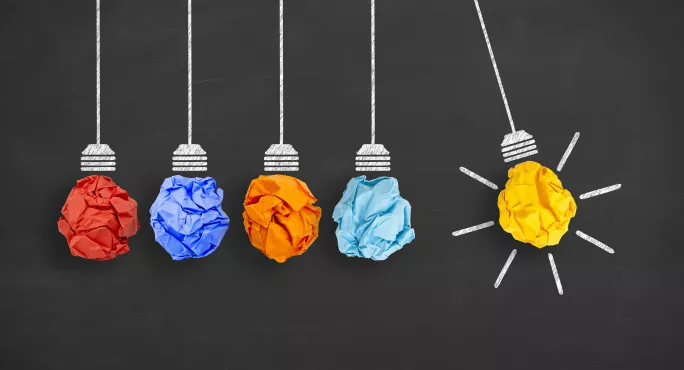Practical ideas to teach science experiments remotely

The coronavirus pandemic has brought a number of challenges to lesson planning for me as an IB physics teacher - not least in how to carry out experiments that are essential to the understanding of core scientific concepts.
However, just as we expect students to learn and grow through their time in school, so too we as educators must adapt, innovate and learn - especially as teachers the world over are facing a mix of virtual learning environments (VLEs), are back in school or a mix of both.
But how can we realistically offer students the chance to carry out the necessary scientific experiments in a safe and controlled manner - especially when they don’t have access to many of the usual kit required?
Well, just like science, it’s all about experimentation, and trial and error. These are some ideas I think can work well, as well as some pointers on ways to overcome the apparent lack of equipment.
Measuring tools are everywhere
The first thing to note is that students probably have access to more equipment than you might first think.
Protractors, thermometers, 15 or 30cm rulers, kitchen scales, measuring jugs are all useful items - and you never know: some might even have a full workshop.
Mobile phones with stopwatches and perhaps access to apps such as Google Science Journal which can access the following sensors: accelerometer; barometer; brightness; compass; magnetometer; pitch and sound intensity…all highly useful.
You can also make your own
And if students don’t have certain tools, then making them at home can be a form of experiment in itself.
For example, one litre of water has a mass of 1kg. So if a student fills a container with water using a measuring jug they can create a weight of a known amount they can use in experiments where a weight of known mass is required (as we shall see).
Secondly, to create a long ruler, they can simply use a piece of string and by folding it against something of a known length - such as a 30cm ruler - and marking each fold, they can create a much longer ruler of several meters
Time to experiment
Once you have your homemade scales, there are several fun experiments you can conduct:
Projectile motion
Using the long ruler, students can now conduct an experiment to see how far an object travels under different release pressures.
For example, they can release an object horizontally rolling a ball from a fixed position down a ramp on a table, recording the trajectory as it leaves the table or use a spring/rubber band toy launcher on the ground.
Not only can they log how far it travels but, using video analysis and most smartphones slow-motion function, they could even plot its trajectory, too.
A great piece of software to help with this is Tracker, which is free to download and available for Windows, Linux and OSX platforms.
Friction
Make an object of mass - labelled m - using a water container. Place on a surface and attach by a string over a pulley to another water container mass, M.
You can easily find a pulley in toy building sets or make one using thin card, a chopstick and a soda/water bottle top. Cut out two circular pieces of card, approx 10cm in diameter. Puncture a hole through the card circles and the bottle top. Sandwich the plastic top between the 2 pieces of card and insert the chopstick through all 3 holes. Instant pulley.
Using the string to measure distance, the stopwatch on a phone to measure time and water containers as variable masses, students can calculate the object’s acceleration and hence the friction coefficient.
Make sure the large mass, M, is a multiple of the smaller masses, m to make calculations easier.
Split the experimental process into different tasks
Of course, some schools may be in a situation where some students are in school and some are learning remotely. While posing a potential issue, it can still be overcome.
For example, you can partner students in school with those at home and divide the experiment into hands-on and recording tasks.
The in-class student would conduct the experiment, reading out data - for example, electricity readings on voltmeter and ammeter - while the VLE student records, acting as timekeeper and offering feedback on the experiment in real time.
Both can then work together on analysis and evaluation, recreating the already familiar collaboration skills.
Or, suitable for blended or VLE, ask students to observe qualitatively before completing a secondary connected quantitative task.
For example, an experiment on diffusion could require students to place food dye in hot and cold water and observe the differing rates of colour diffusion.
The second task is then completed using a teacher-supplied set of data describing this experiment allowing full assessment of analysis and evaluation skills.
This is, in fact, not so different to how many high-end science locations work, where one team works on-site collecting measurements and another team analyses it. This is how they operate at CERN, for example.
Remember: there is no perfect plan, so make sure both you and the students have fun. After all the enjoyment of exploration and discovery is the heart of science.
Aaron Greenall is an IB physics teacher at the British International School of Houston. He has taught internationally for seven years
You need a Tes subscription to read this article
Subscribe now to read this article and get other subscriber-only content:
- Unlimited access to all Tes magazine content
- Exclusive subscriber-only stories
- Award-winning email newsletters
Already a subscriber? Log in
You need a subscription to read this article
Subscribe now to read this article and get other subscriber-only content, including:
- Unlimited access to all Tes magazine content
- Exclusive subscriber-only stories
- Award-winning email newsletters